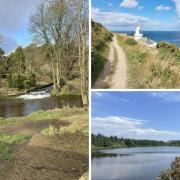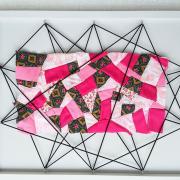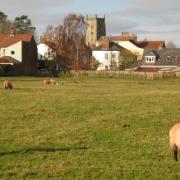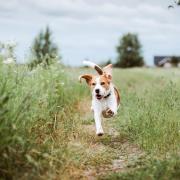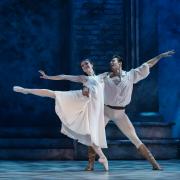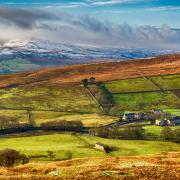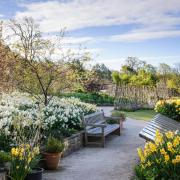Jo Haywood meets a Whitby artist who weaves a little magic into her nature-inspired sculptures
There are plenty of sculptures that tempt you to touch, but Emma Stothard’s prompt you to pat. In fact, her life-size horses, dogs and countryside creatures are so life-like it wouldn’t come as a great surprise to see an art lover feeding one a sugar lump while throwing a stick for another.
This isn’t to say, however, that they are accurate renditions down to the last whisker, feather and horn. Her willow and steel creations are much looser than that, inspired by a love of nature that stretches back to her childhood in the East Yorkshire village of Welwick.
‘I drew the village and landscape around me when I was young,’ she explained.
‘When you have a skill and a passion you just go with it at that age. I knew from day one that I wanted to go to art college. I didn’t know if I could make a career out of it, but I knew all I wanted to do was draw.’
She completed her degree in Southampton then moved in to an artists’ commune in Lancashire (‘I was still very much in that student mode!’). While there, she became friends with an artist who was working with willow. As someone who had always been heavily influenced by nature, it immediately struck a chord.
‘The idea of growing the materials you worked with really appealed to me,’ she said. ‘It seemed like the perfect medium for my art.’
After two years in the commune, Emma decided it was time to get a job and signed up for teacher training at Bretton Park, which sits at the heart of Yorkshire Sculpture Park in Wakefield. During a break from training, she went to Somerset to work with a company that grew willow and made garden ornaments.
‘I submerged myself in the whole process,’ she said. ‘I wanted to experience how it grew at first hand. I wanted to really understand the material.’The company had a stand at Chelsea Flower Show, where Emma first saw the work of successful willow sculptor Serena de la Hey – best known for her 12-metre Willow Man next to the M5 at Bridgwater – and realised she could make a career in art.
‘It didn’t have to be a hobby – I really, really hate that word – it could be a productive, creative way of earning a living,’
Back in Yorkshire she went to Harrogate Flower Show with one of her willow sculptures (a cockerel) under her arm. She walked round the showground hoping people would ask where she got it from. They did and she ended up with her own stand and a list of orders.
Her pieces now sell for between �300 and �10,000, depending on the scale and detail of the sculpture. The willow, which she gets in four-feet and six-feet bundles of varying thickness, has to be soaked in cattle troughs for a couple of weeks to make it supple. She then weaves it round a steel frame she has previously welded to create the armature of the animal or figure.
‘The willow is densely woven to create a virtually solid form,’ she explained. ‘I’ve recently started using wire too to achieve better detail and to create finer points like ears and hooves. I would start with thick willow for a large piece like a horse and use thinner willow for smaller pieces and for creating muscles and movement.’She prefers working on animals rather than figures and, when pushed, will plump for horses over all others.
‘I find their strength, power and character very inspiring,’ said Emma. ‘Working with willow helps me to capture all that. It’s the natural medium for a natural subject.’ You can see more of her work at www.emmastothard.com and she also exhibits her smaller pieces in Green’s Restaurant, which she runs in Whitby with her husband Rob, and her larger work through annual exhibitions at Newby Hall in Ripon.
Most of her commissions come from word-of-mouth recommendations and she can spend anything up to three months on larger works like her popular mare and foal.‘The work can be strenuous but I find it therapeutic,’ she said. ‘I enjoy being in my workshop. It’s my time and I don’t have to think about anything else.’
With Yorkshire Sculpture Park, the Henry Moore Institute and the upcoming Hepworth in Wakefield, you might be forgiven for thinking the county has more than its fair share of sculpture on display. But Emma thinks there is always room for improvement.‘When I travel abroad there is always so much more public art,’ she said. ‘Even the airports are full of amazing work. I’d like to see more here in Yorkshire.’
So where would she put one of her pieces? On a plinth alongside a Henry Moore in Leeds or shoulder to shoulder with a Barbara Hepworth in Wakefield?
‘Neither,’ said Emma. ‘Given a choice, I’d make a piece for the new roundabout on the A64 at York. That’s what I call public art.’





